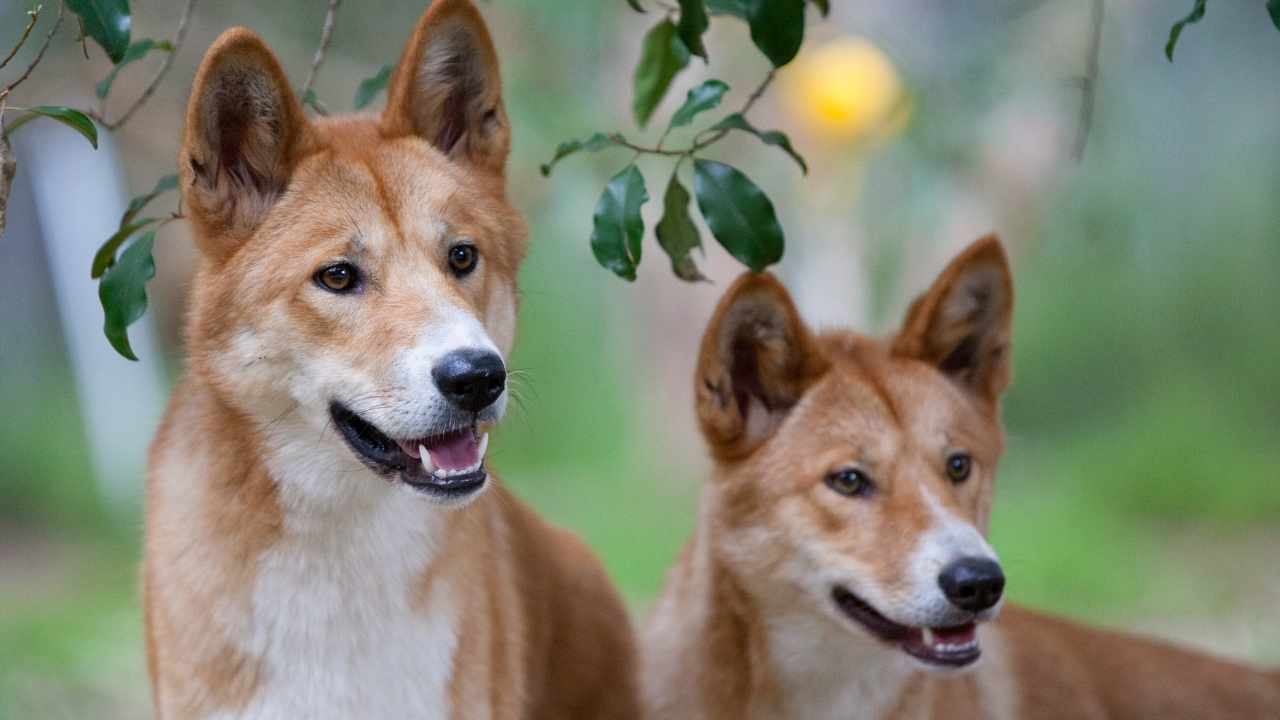Think your dog has that wild, untamed look? It might just be channeling its inner dingo.
Surprisingly, several domestic breeds have a striking resemblance to Australia’s wild canines.
Dingoes aren’t your average wild dogs—they’re clever, lean, and genetically distinct.
And some household pups carry those same primal vibes… minus the whole “stealing your sandwich in the Outback” part.
In a world where everyone’s chasing wolfdogs, why not go for a dingo doppelgänger instead?
It’s the perfect blend of wilderness aesthetic and loyal companion energy.
You’d be amazed at how many breeds share those sharp ears, golden coats, and sleek frames.
Hint: Some of them might even be herding your neighbor’s sheep right now.
Ready to meet these uncanny lookalikes? Let’s dive into the top dog breeds that bring Dingo vibes—no bushwalking required.
7 Dog Breeds that Look Like Dingoes
1. Australian Stumpy Tail Cattle Dog
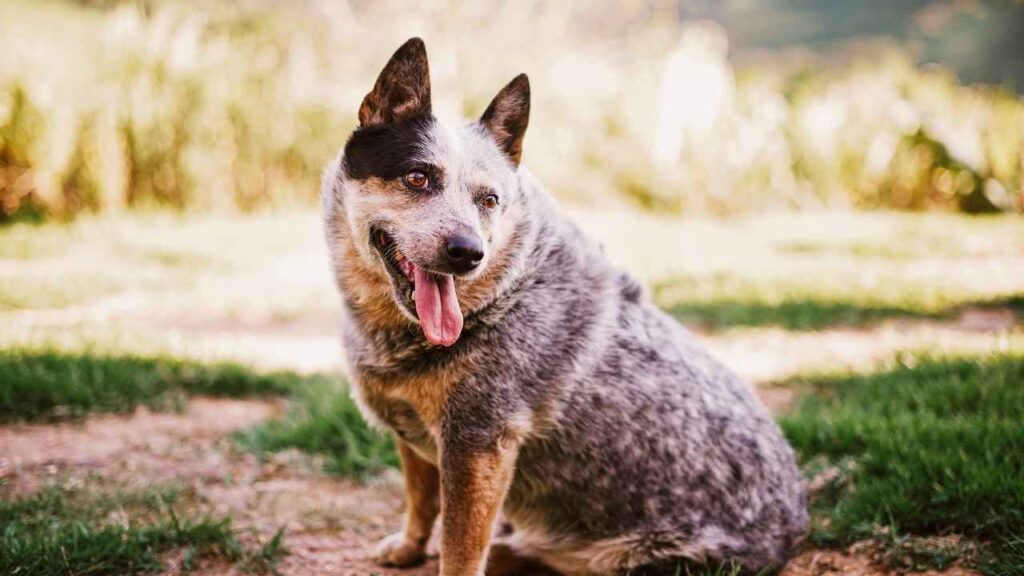
This Australian dog breed didn’t just wake up one day with a short tail and dingo vibes—it was selectively bred that way. A true-blue herding dog, it combines native wild dog genetics (yes, including a dash of dingo) with early British working breeds.
The result? A dog with the intensity of a caffeinated sheepdog and the no-nonsense attitude of a seasoned ranch hand.
AKC notes that these medium-sized dogs are built like athletes on a mission. Agile, alert, and suspicious of strangers—your nosy neighbor with better reflexes.

Their signature look includes erect ears, a weatherproof double coat, and, of course, that naturally bobbed tail that’s basically their version of a mic drop.
Intelligent? Very. Easy to train? If you enjoy arguments with someone smarter than your ex, go for it. First-time dog owners, proceed with caution—or have a professional trainer on speed dial.
Mental stimulation isn’t optional; it’s mandatory. Without tasks, they’ll invent their own, like reorganizing your socks by color or taste. Bonus: They shine in dog sports like agility and obedience if you’re into competitive chaos.
Despite their tough exterior, they form strong bonds with their humans. But small pets? Let’s just say their high prey drive isn’t great for guinea pigs.
One fun fact: their wild-child DNA makes them one of the closest domestic dogs to actual Australian dingoes. Just don’t expect them to steal your baby… unless it’s a chew toy.
2. Australian Cattle Dogs
If the Australian Stumpy Tail is the minimalist cousin, this breed is the overachiever who brings both the tail and the attitude. Nicknamed the Blue Heeler, this Australian dog breed was bred for herding cattle across brutal terrain—and possibly for outsmarting humans in the process.
They’re compact, tough, and muscular, rocking a thick double coat that comes in stylish shades like blue merle or red ginger.
Don’t be fooled by the pretty colors, though—they’re not here to lounge on the couch unless the couch is running away and needs herding.

These dogs are intelligent to the point of being a little too self-aware. They’ll learn your routine faster than your kids and start correcting you if you get off schedule. Agility training? Yes. Obedience? Only if they feel like it.
High energy doesn’t even begin to cover it. These dogs need constant mental stimulation and physical exercise, or they’ll get “creative” with your furniture.
Strong bonds are their thing—loyal to their humans, skeptical of strangers, and generally unimpressed by other dogs. Not ideal for small animals. Like, at all.
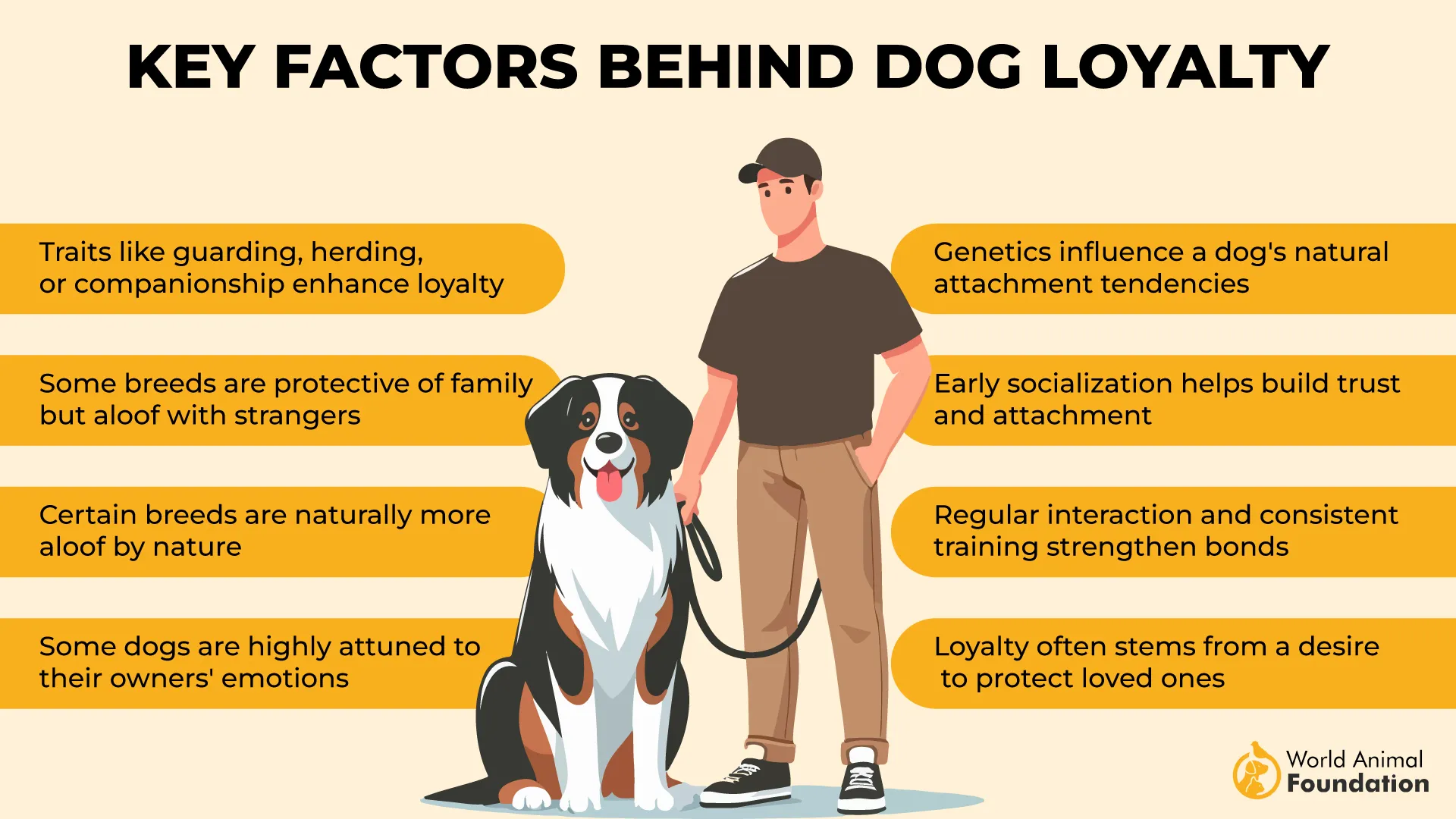
Fun fact: They descend partly from Australian dingoes, making them one of the wildest domesticated geniuses in the American Kennel Club registry. Just don’t expect them to chill—they’re allergic to boredom.
3. Thai Ridgeback

Straight out of Thailand and straight-up mysterious, the Thai Ridgeback looks like it walked out of a dingo family reunion. It’s got the same sleek body, piercing eyes, and that “don’t mess with me” energy that screams wild roots, minus the Australian passport.
What really sets this breed apart is the ridge of hair running along its back in the opposite direction—kind of like a mohawk for dogs, but make it fashion. They’re lean, muscular, and built for action, not lap cuddles. Sorry, clingy humans.
PetMD claims that training them is like trying to convince a cat to do yoga: they hear you, but they just don’t care. Independent and stubborn, they require experienced potential owners who appreciate their sass and confidence.
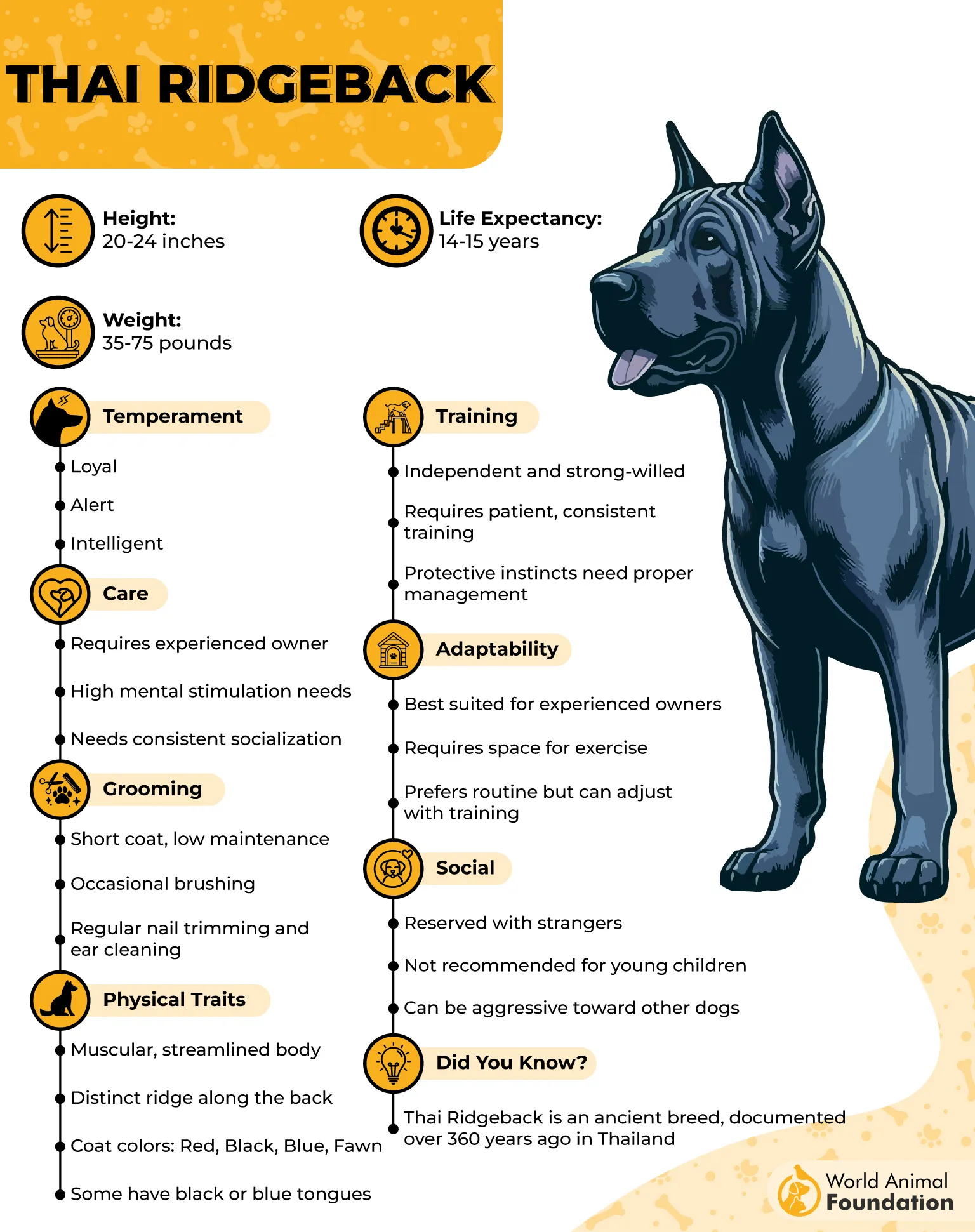
Exercise? Mandatory. Mental stimulation? Non-negotiable. Otherwise, they’ll decorate your home with shredded pillows. They thrive in warm climates and aren’t fans of small pets due to their strong prey drive.
They’re not for first-time dog owners, but if you’re into exotic, intelligent, low-maintenance dogs that look like they could survive in the wild? This is your dog.
Surprise trivia: Despite their rarity in North America, Thai Ridgebacks share primitive traits with both Australian dingoes and other pariah dogs around the world. They’re part ninja, part runway model.
4. Carolina Dog
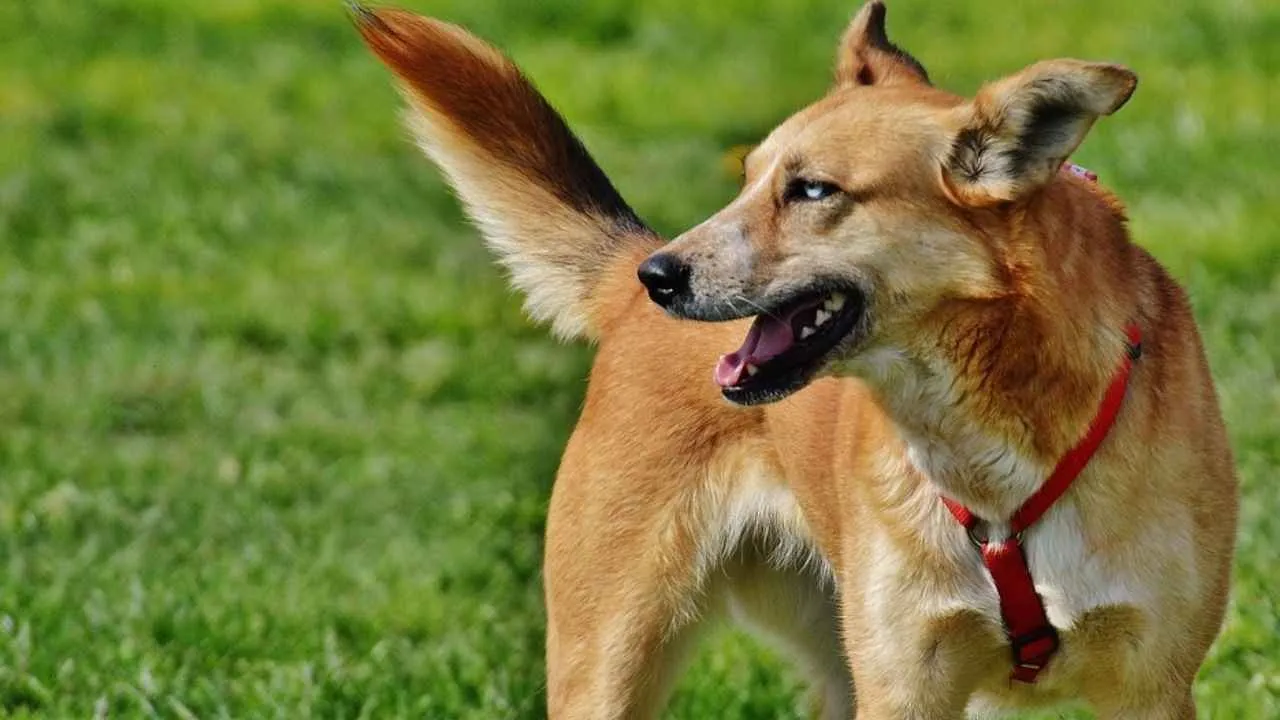
Meet the Dixie Dingo—yes, that’s a real nickname. This medium-sized, feral-looking breed was discovered roaming around South Carolina like it had just ghosted domestication altogether. And honestly? Same energy.
With erect ears, almond eyes, and a sleek, athletic body, the Carolina Dog is basically nature’s DIY version of a domestic dog. According to Carolina Dog fanciers, this breed wasn’t crafted in a lab—it evolved in the wild, which explains a lot.
Temperament-wise, think shy introvert at a party—watchful, reserved, and maybe plotting an escape route. They’re intelligent and adaptable but require a gentle hand, positive reinforcement, and probably a therapist if you push them too hard, too soon.
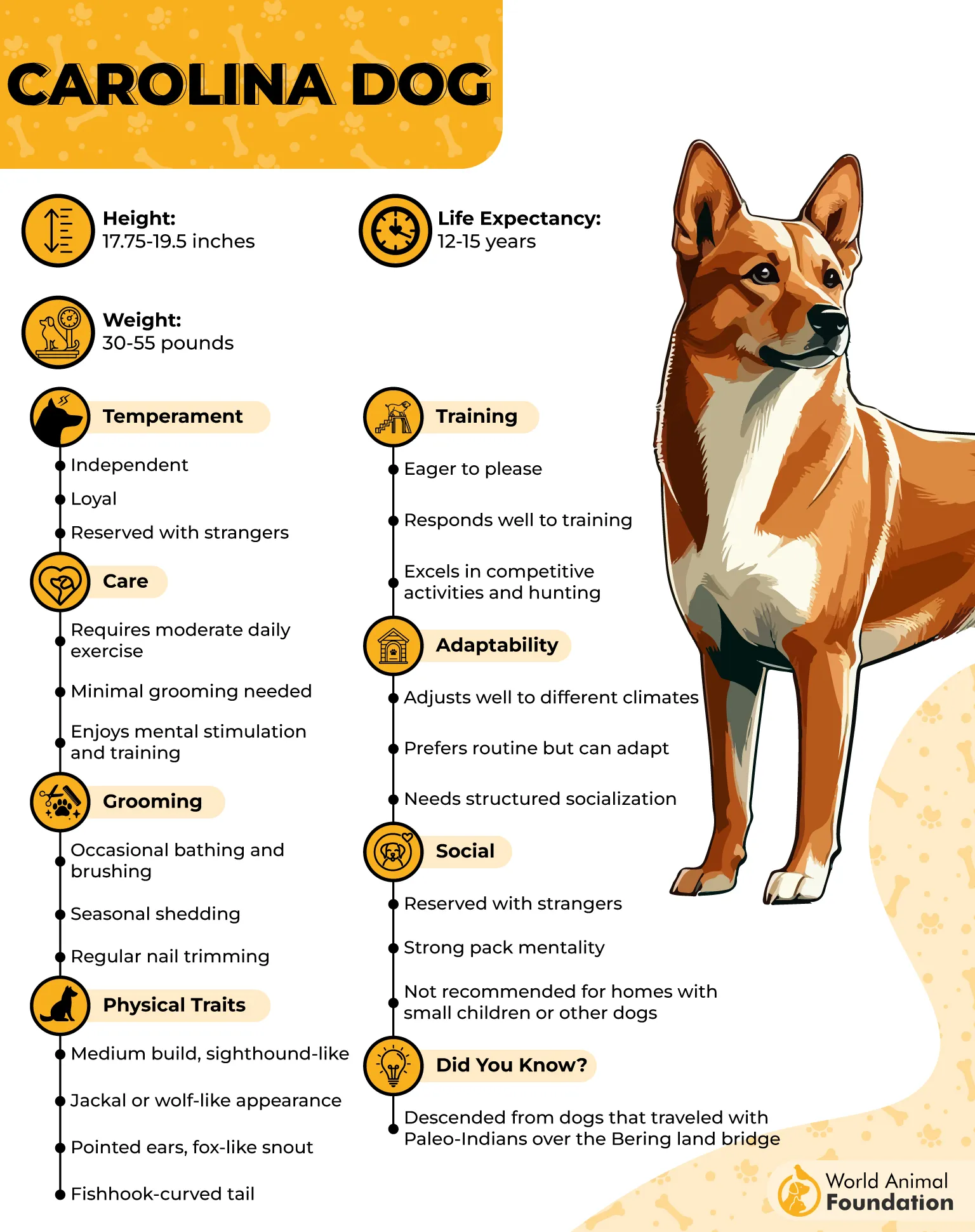
Exercise and structure are key. They’re not exactly dog sports stars, but they’ll out-hike most other breeds and still have the energy to judge your cardio levels.
They form strong bonds with their humans but prefer a calm home without too much chaos. Small pets? Not unless they’re faster than a squirrel.
Fun fact: Their genetics are so close to wild dogs, researchers have literally studied them as a model for early domesticated breeds. Basically, this dog is the missing link between couch-potato pups and wolves.
5. Canaan Dog
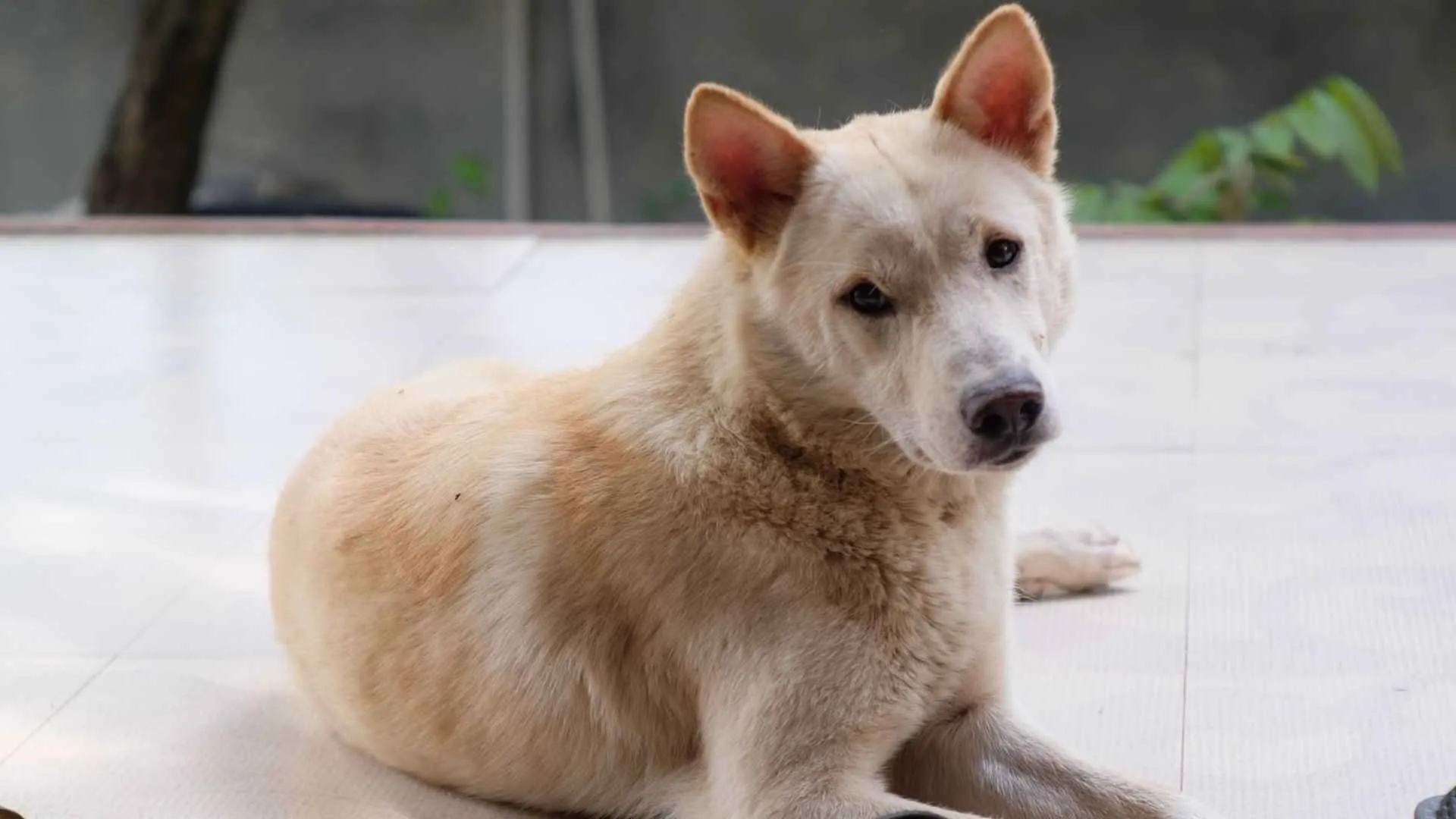
The Canaan Dog is what happens when a breed survives thousands of years in the desert by being smarter than everyone else—including its humans. Straight from ancient Israel, this medium sized dog is basically a living artifact with paws.
Recognized by the American Kennel Club, it’s one of the few domestic dogs that didn’t forget its street smarts after getting a kennel club pedigree. It still acts like it’s patrolling the Negev, even if it now lives in your backyard.
Purina reveals that these dogs are suspicious of strangers, indifferent to other dogs, and skeptical of your commands unless they make tactical sense. Think of them as the tactical analysts of the dog world. Are you first-time dog owners? Not a chance.
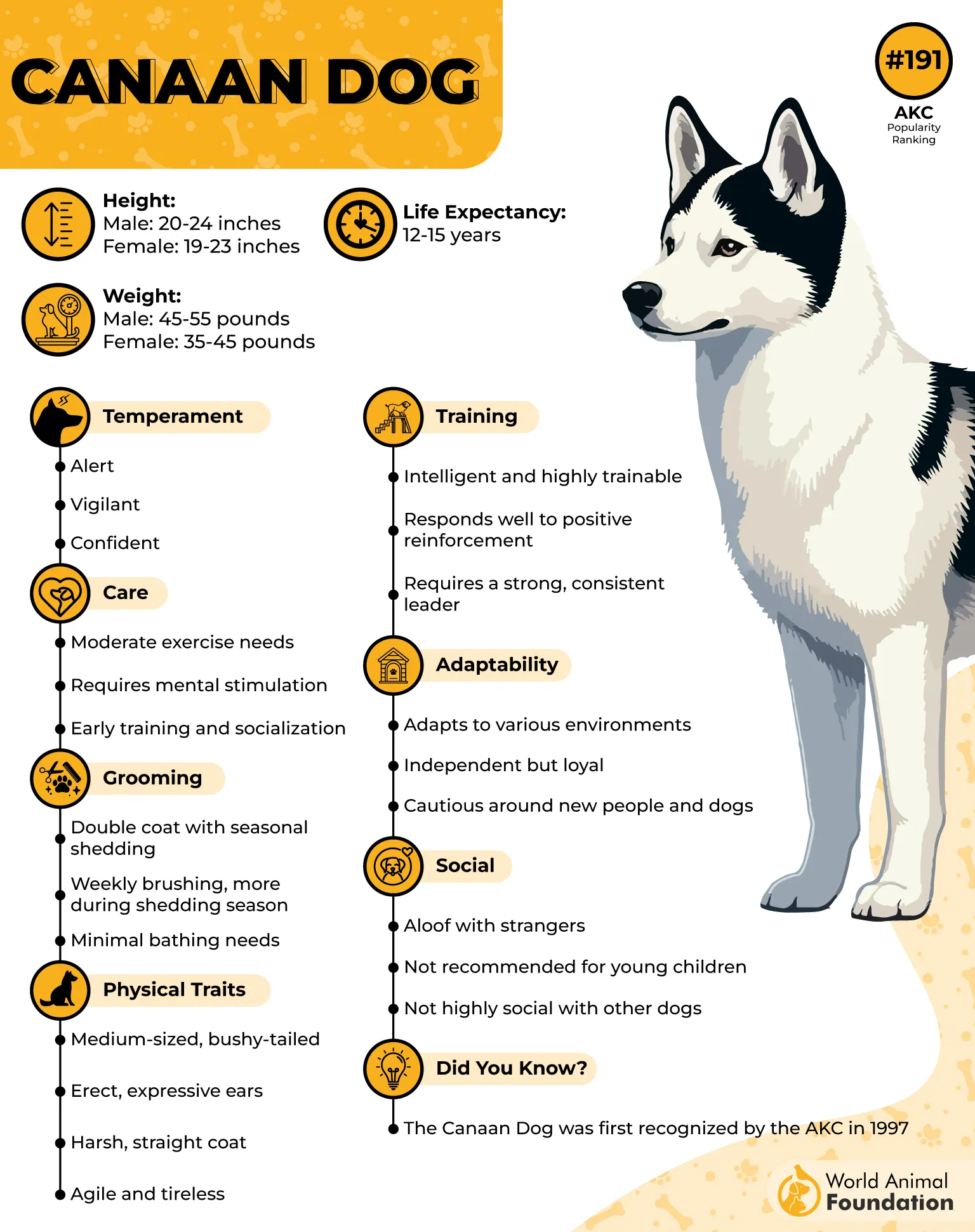
High energy levels mean they thrive on agility training and need regular mental stimulation, or else they’ll redecorate your life. They prefer jobs—and no, an emotional support animal isn’t on their resume.
While they’re loyal and form strong bonds, they don’t beg for attention. They’re too proud. More of a “love me from over there” type.
Trivia bite: Canaan Dogs are genetically close to pariah dogs and share ancient traits with Australian dingoes—basically the original survivalists before it was cool.
6. Podenco Canario
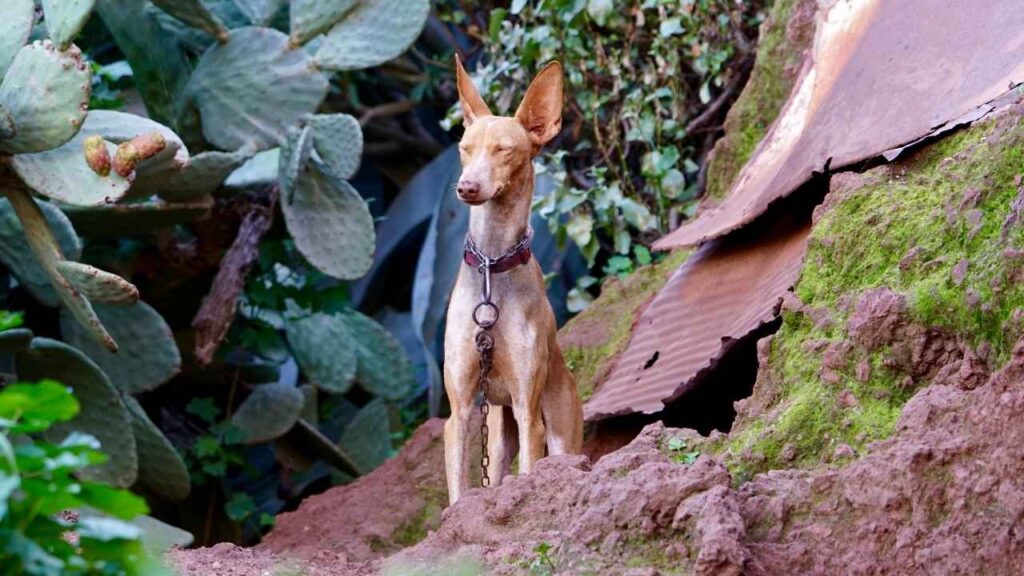
Ah, the Podenco Canario—Spain’s answer to the question: “What if a greyhound and a desert fox had a caffeine-fueled baby?” Sleek, agile, and perpetually alert, this breed looks like it’s always halfway through an escape plan.
Don’t expect couch-potato vibes. These high-energy dogs were bred to hunt rabbits across volcanic terrain, and yes, that’s as dramatic as it sounds. Their lean build, erect ears, and serious focus scream “mission-ready.”
They’re intelligent and independent, which is code for “will listen when convenient.” Training requires creativity, patience, and snacks… a lot of snacks. Not ideal for small pets—unless you’re running a survival-of-the-fittest reality show.
They’re affectionate with their humans but not overly clingy. Great for potential owners who want a dog that loves them without needing constant emotional validation.
Agility and scent work? They eat that up. Apartment living? Only if your apartment has its own dog park.
Random flex: Though not recognized by the AKC, their primitive traits and resemblance to other breeds, like australian dingoes make them a fascinating wild-at-heart companion. Basically, this is the runway model of the ancient dog world.
7. Koolie
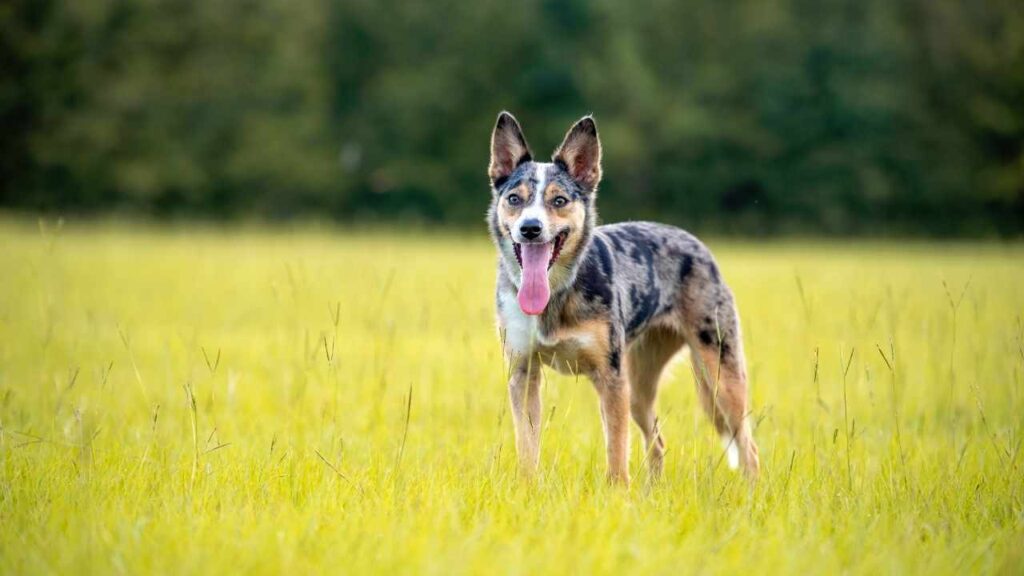
The Koolie may not be in the AKC hall of fame yet, but don’t let that fool you—this Australian dog breed is low-key iconic. Originally bred to herd everything that moves (and some things that don’t), Koolies are working dogs with a PhD in chaos.
They look like the cousin of the blue heeler, but with even more variety in coat colors—think blue merle, red, or whatever nature had left in the paint bucket. They’ve got the classic erect ears, piercing eyes, and a stare that says, “Don’t test me.”
These dogs are intelligent, ridiculously trainable, and possibly psychic. They read human body language like it’s subtitles on a Netflix show. They’re the gold standard in agility training, dog sports, and high-octane fetch sessions.
Let’s talk energy levels: if you’re not doing something active every day, the Koolie will invent something for you—like chasing your neighbor’s Yorkshire Terrier.
They bond deeply with their humans and need meaningful work. Without it? Welcome to The Destruction Olympics.
Fun fact: Koolies are descended from Australian breeds and may share some ancient links to Australian dingoes, especially in their independence and versatility. Basically, they’re overachievers with wild roots.
Conclusion
So, who knew so many domestic dogs were out here moonlighting as wild dingo doubles? From sleek desert runners to scrappy herders, these dingo-esque pups prove you don’t need to live in the Outback to channel that wild energy.
Whether you’re chasing the breed standard or just vibing with the whole “wolf-lite” aesthetic, there’s a match for every style of family life, as long as you’re cool with a little chaos.
Of course, these seven stars aren’t the only ones in the spotlight. Shout-out to honorary mentions like the spirited Miniature Fox Terrier, clever Australian Kelpies, classy Silky Terrier, and the ever-loyal Tenterfield Terrier.
Don’t forget the charming Australian Shepherd, and yes, the iconic Yaller Dog—the Southern cousin of the American Dingo, in case you’re feeling extra feral.
So, thinking about bringing one of these wild-at-heart puppies home? Just remember—these aren’t your average, predominantly white fluffballs.
Now go on, channel your inner explorer. Ready to meet your four-legged doppelgänger from the dingo family tree?


